FREE Standard Shipping On All Orders $100 or More!*
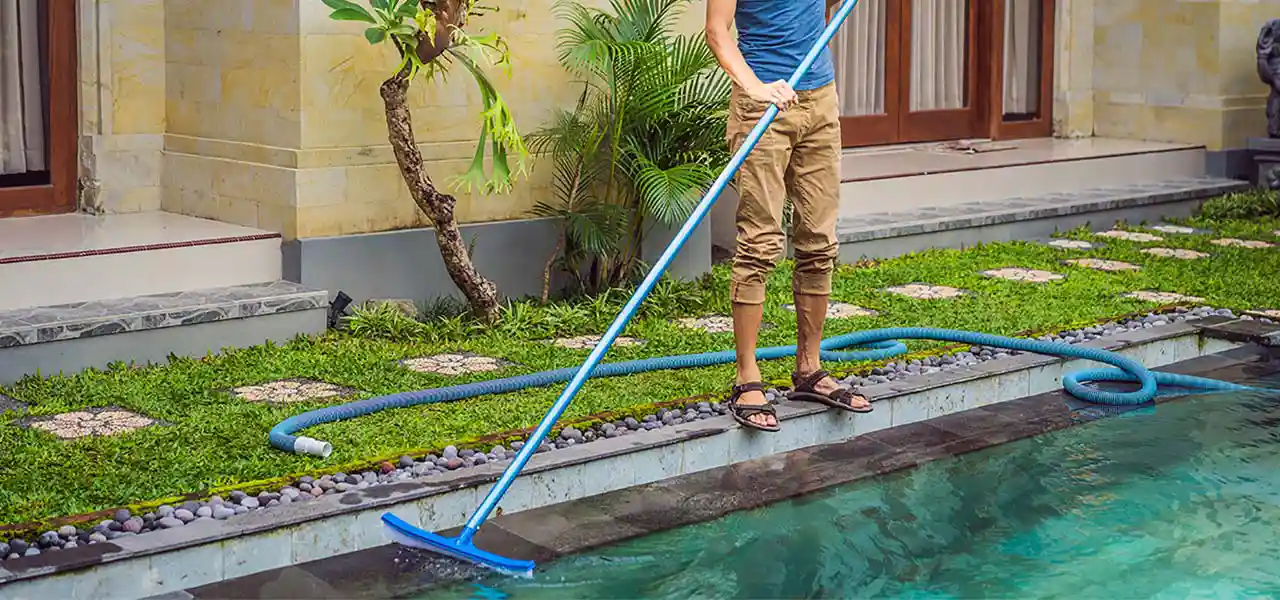
19 Common Pool Opening Mistakes
Ah, spring. The time of year when the weather heats up, the days get longer, and algae blooms in pool water faster than you can say, "Daylight Savings Time." It’s time to pull back those winter pool covers, and get to work opening your pool!
Trying to cut corners and save time when cleaning, balancing pool water chemicals, and preparing equipment will cost you down the road. Opening your pool is a marathon, not a sprint! We're here to help you kickoff pool season with ease and peace of mind. Keep reading to learn about the 19 common pool opening mistakes, and the simple ways to avoid them!
1. Not Cleaning Your Pool Deck First
The first pool opening mistake you might make doesn’t have anything to do with your pool water. It starts on the outside, with your pool deck! Take time to clean off the months of dirt and grime that has built up on and around your deck. Cleaning your deck will keep debris from getting into your pool. And it won’t dirty up the pool cover you are about to clean...
2. Not Cleaning Your Pool Cover
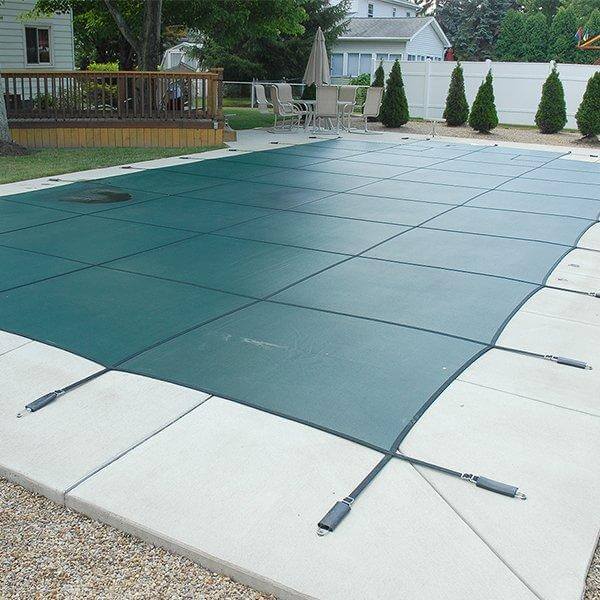
In the midst of wrangling the winter cover or safety cover off your pool, you realize too late that you've doubled your workload. All the leaves and debris on the cover are now in your pool water. Ugh! Take a few minutes to remove as much debris as possible before attempting to take off the cover. Use a leaf blower to clear off the top layer of rubble, and scoop the remainders away with a leaf rake.
If you already cleaned your deck, it will be much easier to fold and clean your cover after it’s removed from the pool. You can use a hose and brush on solid covers, or a leaf blower for mesh covers. The cover should be completely dry before folding it up for storage.
Be mindful of where you store your cover. Keep your cover in a dry, clean area to avoid mice and bugs taking up residence in the cozy folds.
3. Missing the Opportunity to Raise Water Levels
Once you start removing the cover, take the time to refill pool water levels while you're working. It takes a while to refill the pool, so you might as well multitask. Don't get all the way to the point where you're ready to fire up the pump, only to realize the waterline is too low for the skimmer. Depending on the water level, you may move topping off your pool water level to the first step, and just tuck the hose underneath the cover while you work on the deck and cover.
4. Not Cleaning Water Tubes or Bags
If you use water tubes on a solid pool cover or to close safety cover gaps, they are usually pretty dirty and gross after the long off-season. To get a few more seasons out of them, lay them all out on a flat surface, such as a driveway, then hose them off and scrub them clean. Let them dry before rolling or folding up, and store them in a safe location for next year. You can patch any holes with a vinyl patch kit so they'll be ready to go when you need them.
5. Missing a Safety Cover Anchor
If you have a safety pool cover, you may have fallen victim to stubbing your foot on a rogue, forgotten deck anchor. After you’ve worked your way around the perimeter of your pool, turning down all the anchors back into their homes to hibernate for the summer, do yourself a favor and double-check. Odds are, you'll find one or two brass anchors were missed, or a few might require a little more elbow grease to turn them down flush with the pool deck. Better to do it now, than for them to find you later.
6. Forgetting to Pull All the Pool Plugs
Forgetting to pull your winterizing plugs can potentially damage your plumbing when you are finally ready to fire up your pump and filter. Do a quick re-count to make sure you retrieved all plugs from your pool skimmer, returns, spa jets, cleaner line, or any other plumbing lines you plugged in the fall.
7. Not Opening All the Valves
This is another easy-to-forget pool opening mistake, and it's a great way to damage your system or possibly injure yourself. Make sure all the valves are open, so your pump isn’t exerting itself in vain, as you scratch your head and try to figure out why the pump isn’t priming or why the filter lid just blew 20 feet into the air.
8. Not Being Ready for Prime Time
If your pump has a basket with a locking tab inside, lock it into place. And if you removed the drain plugs on your pump, be sure to tightly secure them back into place. Remove any old Teflon tape, and replace with new. Also, make sure to clean (with a rag) and lubricate (with silicone or Teflon pool lube) the pump lid o-ring. Then, tighten the lid snugly after filling the pump with water.
9. Forgetting the Filter Details
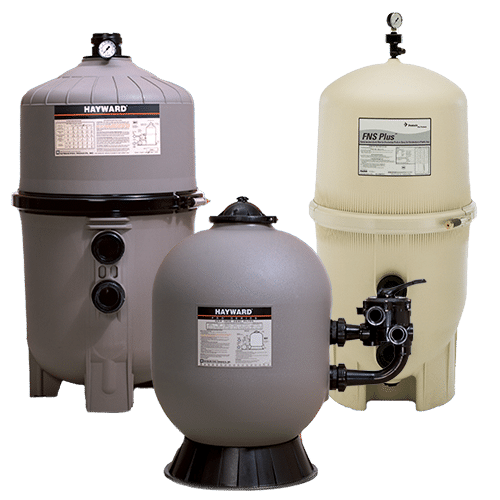
Before turning your pump on for the week (we’ll get to that part shortly), you'll need to put the pressure gauge and drain plug/cap back in place on the pool filter. Hopefully, you stored these and other small, easily misplaced filter parts somewhere safe last fall. Be sure to check that the filter tank clamp is fully tightened and completely covers both tank halves.
If your filter has a multiport valve, set the valve to the "waste" setting to start with, and roll out your backwash hose. Starting the pump on waste for a minute or so will clear out any antifreeze, bugs, dirt, or other undesirables that may have accumulated in your plumbing over the winter. You can then switch to the "filter" setting afterwards. For DE filters, add the DE powder immediately through the skimmer. Open the air bleeder valve on top of the filter tank to bleed off any air trapped inside the filter.
Once the pump is primed, and the water is flowing freely in filter mode, take note of the psi reading on the pressure gauge. This clean filter reading will help you benchmark the optimal running pressure, so you know when to backwash or if you are losing pressure. With a permanent marker, you can write the psi on the filter tank or mark directly on the gauge dial.
10. Not Running the Filter Long Enough
You might not want to hear it, but it’s normal to leave your pool filter system running 24/7 until the water has cleared. It may cost a few more energy dollars, but it certainly won't hurt anything! You'll save money on chemicals, and you'll also save time clearing the pool, by letting the system run continuously for a few days after opening the pool. It shouldn’t take much more than that for most filter systems. Unless, of course, your water chemistry and sanitation are lacking. Which brings us to our next point...
11. Not Adjusting the Total Alkalinity and pH First
We could probably dedicate an entire blog post to the pool water chemistry mistakes one can make while opening a pool. The biggest pool opening mistake, however, is not balancing your pH and Total Alkalinity first. It’s probably the one thing you’ve heard the most: pH levels should be 7.4–7.6, and Total Alkalinity is best in the 80–120 ppm range for most pools. Having your pH a little on the low side of this range will help your chlorine shock work more effectively.
12. Ignoring Cyanuric Acid Levels and Calcium Hardness
Even if your pH and Total Alkalinity levels are perfectly balanced, your pool water quality will suffer without the proper levels of Cyanuric Acid (CYA), also known as stabilizer or conditioner. Ideal CYA levels are between 30–50 ppm. If your pool is freshly filled, you may need to add a bit to bring the levels within range. One treatment in spring is usually all that's needed, and only if the CYA level is low. If CYA levels are too high, treat with Bio-Active CYA Reducer.
Paying close attention to your pool's calcium hardness is just as important as monitoring CYA levels. Ignoring the calcium levels can lead to cloudy water, staining, and scale. The recommended calcium range is 150-400 ppm. After initially adjusting the calcium hardness, you shouldn’t have to worry about it again for the rest of the season.
13. Adding Multiple Chemicals at the Same Time
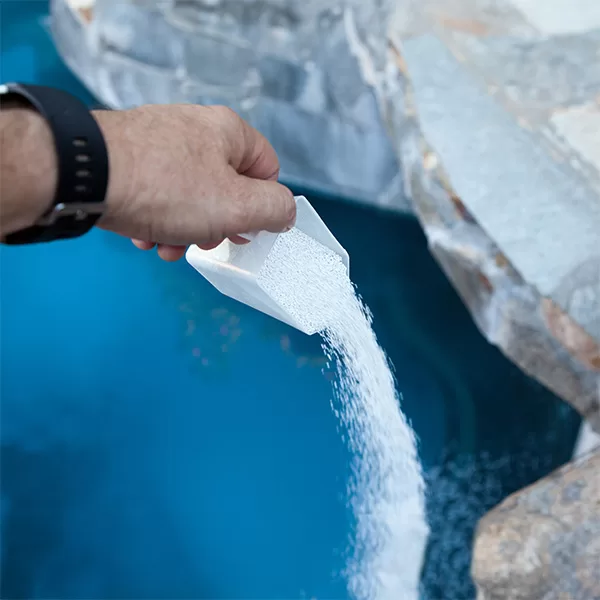
Once all your water is balanced with correct pH, Alkalinity, Calcium and Cyanuric levels, pause. It can be tempting to add shock, algaecide, clarifier and a stain & scale treatment, or an entire Spring Start-Up Kit, all at once. But that is not beneficial to your pool.
For the best results, add pool chemicals gradually over time.
- Day 1: Adjust water balance and shock the pool.
- Day 2: Add clarifier.
- Day 3: Add your stain & scale treatment.
- Day 4 or beyond: Add algaecide.
Shocking can deplete or deactivate other pool chemicals. Always shock first, then add the other chemicals over the following days, once the chlorine level drops.
14. Not Monitoring Chemical Levels
It’s relatively easy to properly balance the chemicals mentioned above. Follow the instructions to a tee, and you should be right on target. Spring pool chemistry can be affected for numerous reasons. Keep an eye on your pool's chemistry levels by testing the water several times during the first opening week, and making additional adjustments as necessary.
15. Not Vacuuming to "Waste"
Once you’ve shocked your pool, or if you've used a Floc treatment, you will need to vacuum out the algae and debris. With the use of a multiport valve, which lets you backwash a sand or D.E. filter, set your vacuum to "waste", and remove any algae or debris from your pool water. Setting your vacuum to "waste" sends the material through the backwash line, and not into the pool filter. If you don't have a multiport valve, you can install a 3-way valve between the pump and filter.
16. Not Brushing the Pool
After vacuuming the pool, give your tile, walls, floors and steps a good brush. We recommend brushing your pool walls twice a day during the first week of opening (and once a week thereafter). This may seem excessive, but it helps clean the pool faster, improves circulation and filtration, and is a killer upper body workout, too!
17. Forgetting to Add Chlorine to Your Chlorinator
One of the worst pool opening mistakes to make is not chlorinating your pool. If you have a floater, chemical feeder, or even a salt system in your pool, be sure they are locked and loaded with the right amount of chlorine. After you shock the pool initially, chlorine levels will be sky-high, but they can quickly deplete, giving algae the chance to bloom again. Keep your test kit handy, and use it frequently for the first few weeks.
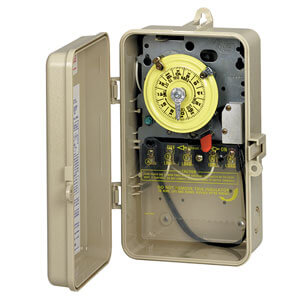
18. Forgetting to Set the Time Clock
If you live in a state that observes Daylight Savings Time, don't forget to reset your pool pump's time clock. If you have the classic Intermatic timer with the yellow dial, pull out on the dial and turn it so that the current time aligns with the down-arrow (located at 6 o'clock).
After the water clears, place the timer dogs (trippers) on the dial, and use pliers to tighten down the set screw, so they don't slip out of place.
19. Forgetting to Yell Cannonball
After all your hard work preparing your pool for the season, it's finally time to open for business. Put on your favorite suit, slather on some sunscreen, and hit the deck. It’s time for the first cannonball of the season. Don’t blow it by forgetting to yell, “CANNONBAAAAAALLLL” as you fly through the air. Happy swimming, everyone!